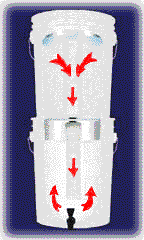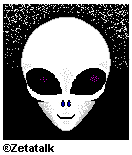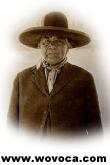Atlantis
Edgar
Cayce on Atlantis
Shambhala
Atlantis
by Colin Wilson
Atlantis has been described as the greatest of all historical mysteries.
Plato, writing about 350 BCE, was the first to speak of the great island
in the Atlantic Ocean which had vanished "in a day and a night," and been
submerged beneath the waves of the Atlantic.
Plato’s account in the two dialogues of
Timaeus and Critias
has the absorbing quality of good science fiction. The story is put into
the mouth of the poet and historian Critias, who tells how Solon, the famous
Athenian lawgiver, went to Sais in Egypt about 590 BCE, and heard the story
of Atlantis from an Egyptian priest. According to the priest, Atlantis was
already a great civilization when Athens had been founded about 9600 BCE.
It was then "a mighty power that was aggressing wantonly against the whole
of Europe and Asia, and to which your city [Athens] put an end." Atlantis,
said the priest, was "beyond the pillars of Hercules" (the Straits of Gibraltar),
and was larger than Libya and Asia put together. It was "a great and wonderful
empire" which had conquered Libya and Europe as far as Tyrrhenia (Etruria
in central Italy). Deserted by their allies, the Athenians fought alone against
Atlantis, and finally conquered them. But at this point violent floods and
earthquakes destroyed both the Athenians and the Atlantians, and Atlantis
sank beneath the waves in a single day and night.
In the second dialogue, the
Critias, Plato goes
into far more detail about the history and geography of the lost continent.
He tells how Poseidon (Neptune), the sea god, founded the Atlantian race
by fathering ten children of a mortal maiden, Cleito, whom he kept on a hill
surrounded by canals. The Atlantians were great engineers and architects,
building palaces, harbors, temples and docks; their capital city was built
on the hill, which was surrounded by concentric bands of land and water,
joined by immense tunnels, large enough for a ship to sail through. The city
was about eleven miles in diameter. A huge canal, 300 feet wide and 100 feet
deep, connected the outermost of these rings of water to the sea. Behind
the city there was a plain 230 by 340 miles, and on this farmers grew the
city’s food supply. Behind the plain there were mountains with many
wealthy villagers and with fertile meadows and all kinds of livestock. Plato
goes into great detail about the city, suggesting either that he had been
told the story at length or that he had the gifts of a novelist. The long
account of magnificent buildings with hot and cold fountains, communal dining
halls and stone walls plated with precious metals has fascinated generations
of readers for more than two thousand years.
But eventually, says Critias, the Atlantians began to lose the wisdom and
virtue they inherited from the god, and became greedy, corrupt and domineering.
Then Zeus decided to teach them a lesson. So he called all the gods together...
And there, frustratingly, Plato’s story breaks off. He never completed
the
Critias
or wrote the third dialogue that would have completed the trilogy, the
Hermocrates. But we may probably assume that the final punishment
of the Atlantians was the destruction of their continent.
Many later scholars and commentators assumed that Atlantis was a myth, or
that Plato intended it as a political allegory: even Plato’s pupil Aristotle
is on record as disbelieving it, yet this seems unlikely. The Timaeus,
the dialogue in which he first tells the story, is one of his most ambitious
works; his translator Jowett called it "the greatest effort of the human
mind to conceive the world as a whole which the genius of antiquity has
bequeathed to us." So it seems unlikely that Plato decided to insert a fairy
tale into the middle of it; it seems more likely that he wanted to preserve
the story for future generations.
For more than two thousand years the story of Atlantis remained a merely
interesting curiosity. But in the late nineteenth century an American congressman
named Ignatius Donnelly became fascinated by it, and the result was a book
called
Atlantis,
the Antediluvian World (1882), which became a bestseller and has been
in print ever since. Even a century later, the book remains surprisingly
readable and up to date. Donnelly asks whether it is possible that Plato
was recording a real catastrophe, and concludes that it was. He points out
that modern earthquakes and volcanic eruptions have caused tremendous damage,
and that there is evidence that the continent of Australia is the only visible
part of a continent that stretched from Africa to the Pacific, and which
scientists have named Lemuria. (Lemuria was named by the zoologist L.P. Sclater,
who noted that lemurs existed from Africa to Madagascar, and suggested that
a single land mass had once connected the two.)
Donnelly also studied flood legends from Egypt to Mexico, pointing out their
similarities, and indicated all kinds of affinities connecting artifacts
from both sides of the Atlantic. He notes that there is a mid-Atlantic ridge,
and that the Azores seem to be the mountain-tops of some large submerged
island. Donnelly’s knowledge of geology, geography, cultural history
and linguistics appears encyclopedic. The British prime minister Gladstone
was so impressed by the book that he tried to persuade the cabinet to allot
funds to send a ship to trace the outlines of Atlantis. (He failed.)
Writing seventy years later in his book
Lost
Continents, the American writer L. Sprague de Camp commented on this
impressive theory: "Most of Donnelly’s statements of facts, to tell
the truth, either were wrong when he made them, or have been disproved by
subsequent discoveries." And he goes on to say: "It is not true, as he stated,
that the Peruvian Indians had a system of writing, that the cotton plants
native to the New and Old Worlds belong to the same species, that Egyptian
civilization sprang suddenly into being, or that Hannibal used gunpowder
in his military operations..." De Camp demonstrates that Donnelly’s
scholarship is not as reliable as it looks; but there is still a great deal
in the 490-page book that he leaves unchallenged.
Five years before the publication of Donnelly’s book, the subject of
Atlantis has been raised in an immense two-volume work called
Isis
Unveiled by the Russian occultist Helena Blavatsky, who had dashed off
its fifteen hundred pages at a speed that suggests automatic writing. But
her comments on Atlantis occupy only one single page of Volume One (593),
in which she explains that the inhabitants of Atlantis were the fourth race
on earth, and that they were all natural "mediums." Having acquired their
knowledge without effort, this people was an easy prey for "the great and
invisible dragon" King Thevetat, who corrupted them so that they became "a
nation of wicked magicians." They started a war which ended in the submersion
of Atlantis...
After a shattering expose in which she was declared a fraud, Blavatsky returned
to London and died of Bright’s disease at the age of 60 in 1891. She
left behind a manuscript that was even larger and more confusing than Isis
Unveiled, a book called
The
Secret Doctrine. This is a commentary on a mystical work called
The
Book of Dzyan, allegedly written in Atlantis in the Senzar language,
and it explains that humans are not the first intelligent race on earth.
According to Madame Blavatsky, all knowledge of the past is imprinted on
a kind of psychic ether called Akasa, and this knowledge is called the Akasic
(alternatively, Akashic) records. She also claims that the survivors of Atlantis
peopled Egypt and built the pyramids about a hundred thousand years ago.
A rather more credible theory of Atlantis was propounded in the late 1960s
by a Greek archaeologist, Angelos Galanopoulos, based on the discoveries
of Spyridon Marinatos on the island of Santorini or Thera, in the Mediterranean.
Around the year 1500 BCE a tremendous volcanic explosion ripped apart Santorini,
and probably destroyed most of the civilization of the Greek islands, the
coastal regions of eastern Greece, and of northern Crete. This, Galanopoulos
suggests, was the catastrophe that destroyed Atlantis. But surely the date
is wrong? The destruction of Santorini took place a mere nine hundred years
before Solon, not nine thousand. This is the essence of the argument --
Galanopoulos believes that a scribe accidentally multiplied all figures by
ten. He points out that all Plato’s figures seem far too large. The
10,000 stadia (1,150 mile) ditch around the plain would stretch around modern
London twenty times. The width and depth of the canal 300 feet wide and 100
feet deep seems absurd; surely 30 feet by 10 feet would be more likely? As
to the plain behind the city, 23 by 34 miles would be a more reasonable size
than 230 by 340 miles. If all Plato’s figures are reduced this way,
then Santorini begins to sound altogether more like Atlantis, although
Galanopoulos suggests that the Atlantian civilization stretched all over
the Mediterranean, and that Crete itself was probably the Royal City. And
how could such a mistake come about? Galanopoulos suggests that the Greek
copyist mistook the Egyptian symbol for 100 -- a coiled rope -- for the symbol
for 1,000 -- a lotus flower.
There is only one major objection to this theory: Plato states clearly that
Atlantis was beyond the Pillars of Hercules. Galanopoulos argues that Hercules
performed most of his labors in the Peloponnese, and that the Pillars of
Hercules could well refer to the two extreme southern promontories of Greece,
Cape Matapan and Cape Maleas. But Plato says clearly: "They [the Atlantians]
held way... over the country within the pillars as far as Egypt and Tyrrhenia."
And no amount of revisionary geography can place Egypt and Etruria within
the promontories of Greece. So another fascinating theory must be reluctantly
abandoned.
According to Edgar Cayce,
Atlantis extended from the Sargasso Sea to the Azores, and was about the
size of Europe. It had experienced two periods of destruction, in the first
of which the mainland had divided into islands. The final breakup occurred,
as Plato said, about 10,000 BCE, and the last place to sink was near the
Bahamas. He claimed that archives dealing with Atlantis now exist in three
places in the world, one of these in Egypt. In June 1940 Cayce predicted
that the island called Poseidia would rise again, "expect it in ‘68
or ‘69." It would happen in the area of the Bahamas.
Early in 1969 a fishing guide called Bonefish Sam took the archaeologist
Dr. J. Manson Valentine to see a line of rectangular stones under twenty
feet of water in North Bimini, in the Bahamas. Valentine was startled to
find two parallel lines of stones about 2,000 feet long. They became known
as the Bimini Road. But scientists disagreed from the beginning. John Hall,
a professor of archaeology from Miami, said they were natural formations;
John Gifford, a marine biologist, thought that if the stones were produced
by "geological stress" then there would be far more of them over a wider
area. He concluded that "none of the evidence conclusively disproves human
intervention." One of the investigators, David Zink, wrote a book called
The Stones of Atlantis, and had no doubt whatsoever that some of the
stones were handmade. In fact, one object was a stone head. But even if the
Bimini Road could be shown to be part of a temple, this would still not prove
that it was built more than ten thousand years ago; it could be the product
of a much more recent culture.
Source:
Unsolved
Mysteries by Colin Wilson and Damon Wilson
Continue to
Edgar Cayce
on Atlantis.
Go to
Shambhala.
Further Resources
Mysteries
of Atlantis Revisited
by Edgar E. Cayce, Gail Cayce Schwartzer, Douglas Richards
Atlantis:
The Antediluvian World
by Ignatius Donnelly
Edgar
Cayce on Atlantis
by Edgar Evans Cayce
From
Atlantis to the Sphinx
by Colin Wilson
Isis
Unveiled
by Helena Blavatsky
Lost
Continents
by L. Sprague de Camp
Maps
of the Ancient Sea Kings
by Charles H. Hapgood
The
Secret Doctrine
by Helena Blavatsky
Timaeus
and Critias
by Plato
Unsolved
Mysteries
by Colin Wilson and Damon Wilson
When
the Sky Fell: In Search of Atlantis
by Rand Flem-Ath, Rose Flem-Ath
Shapeshift back to Myths
and Mysterious Places











![[Image]](pict41.jpg)
![[Image]](pict43.jpg)